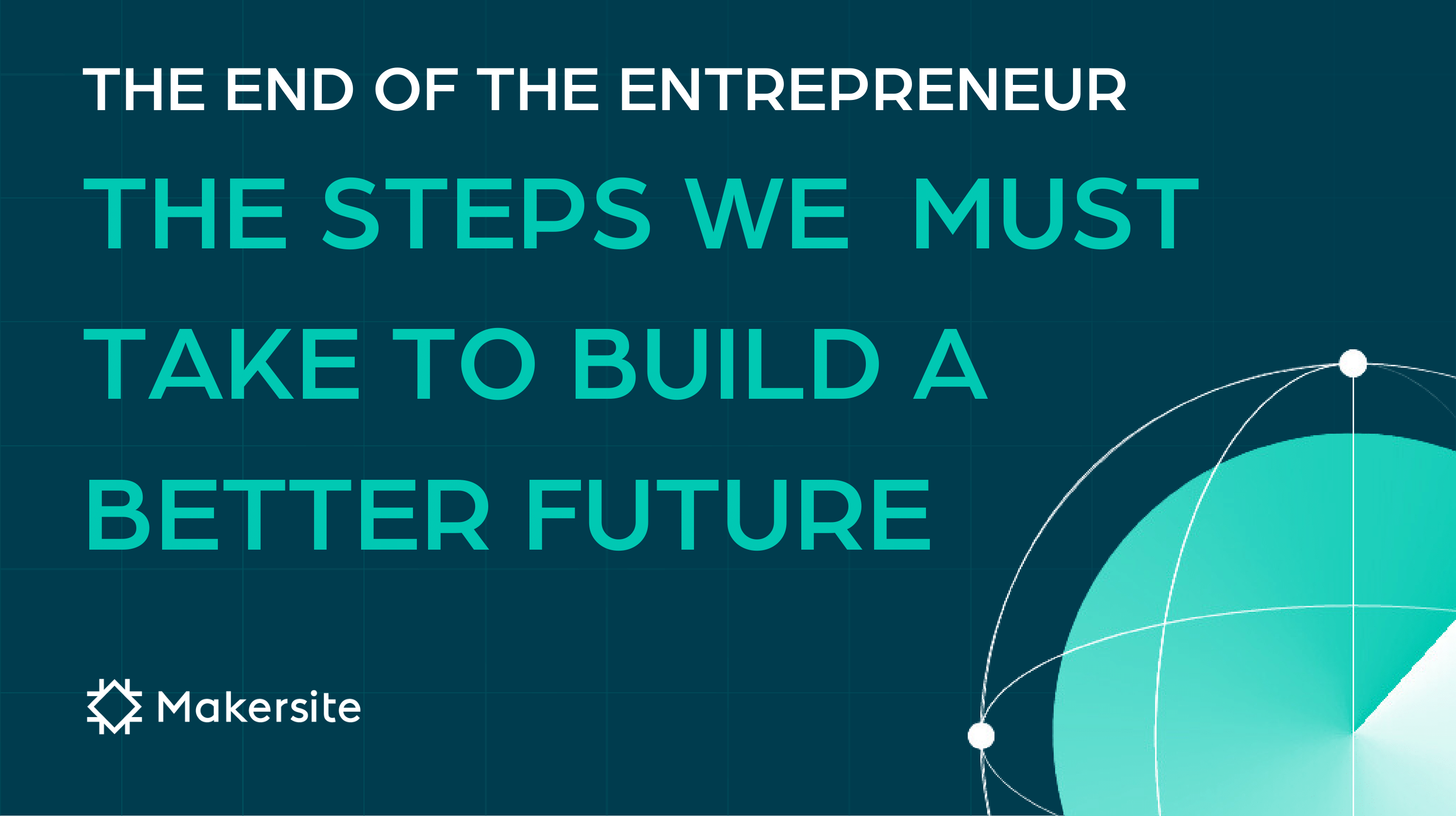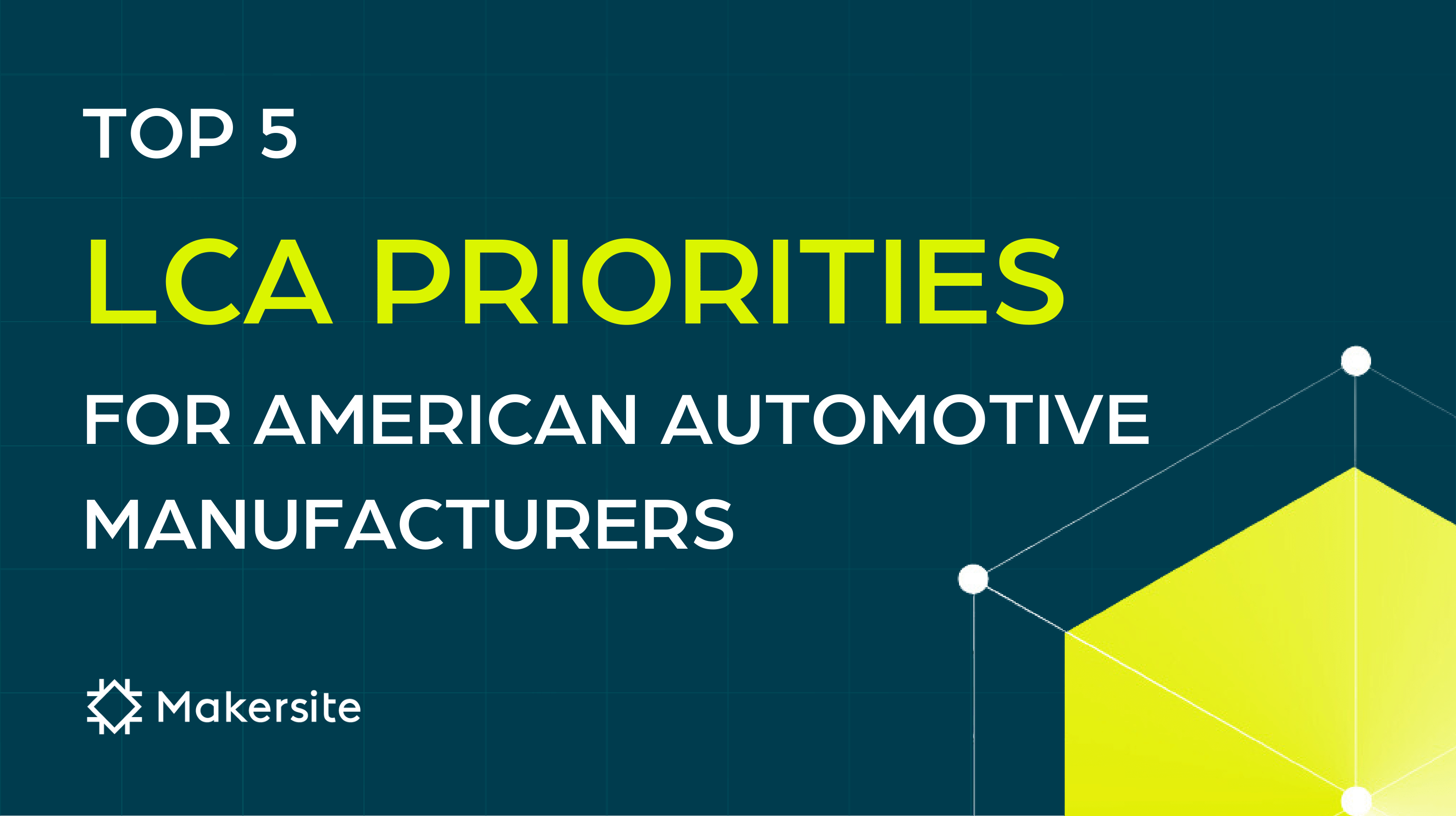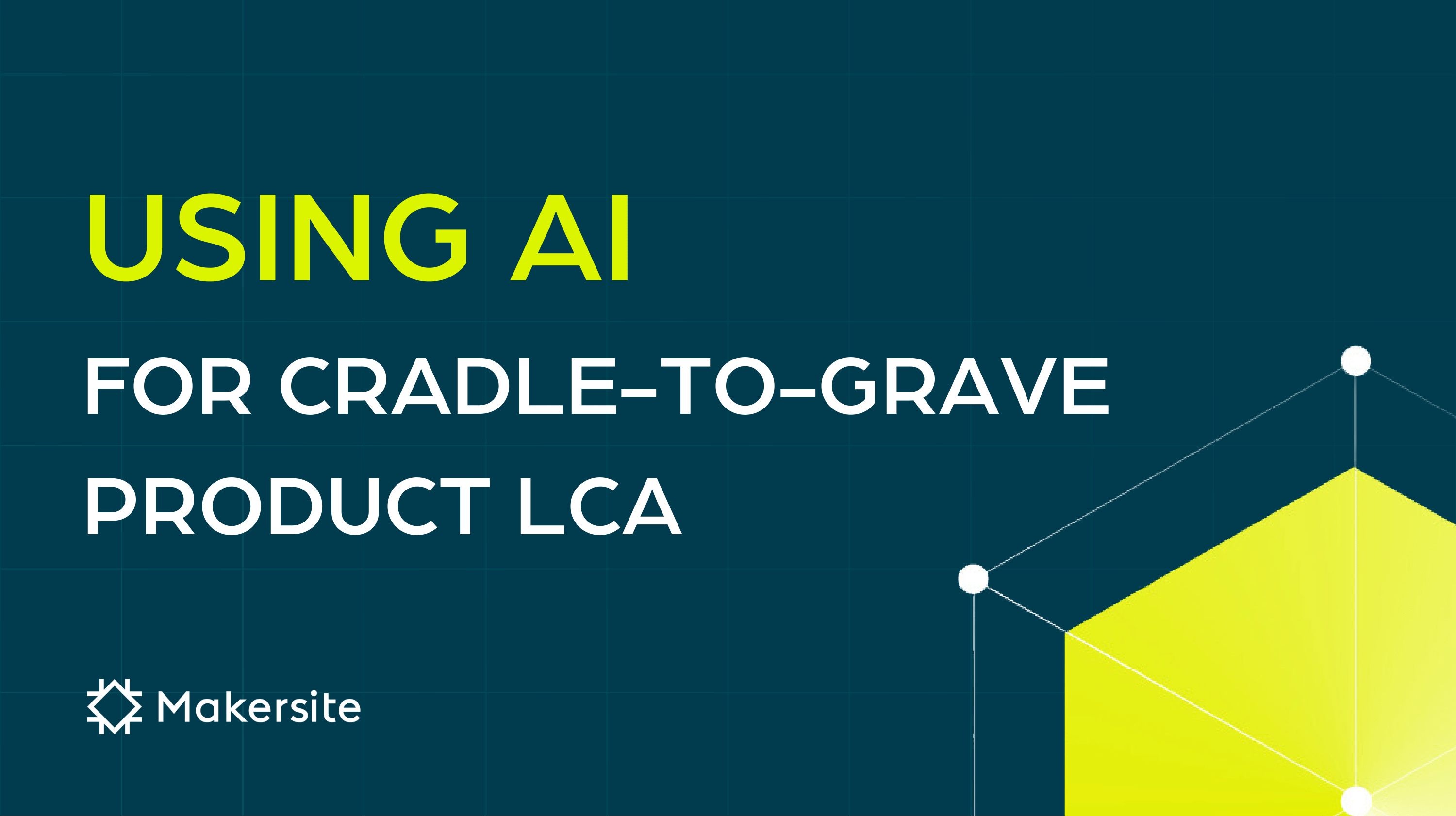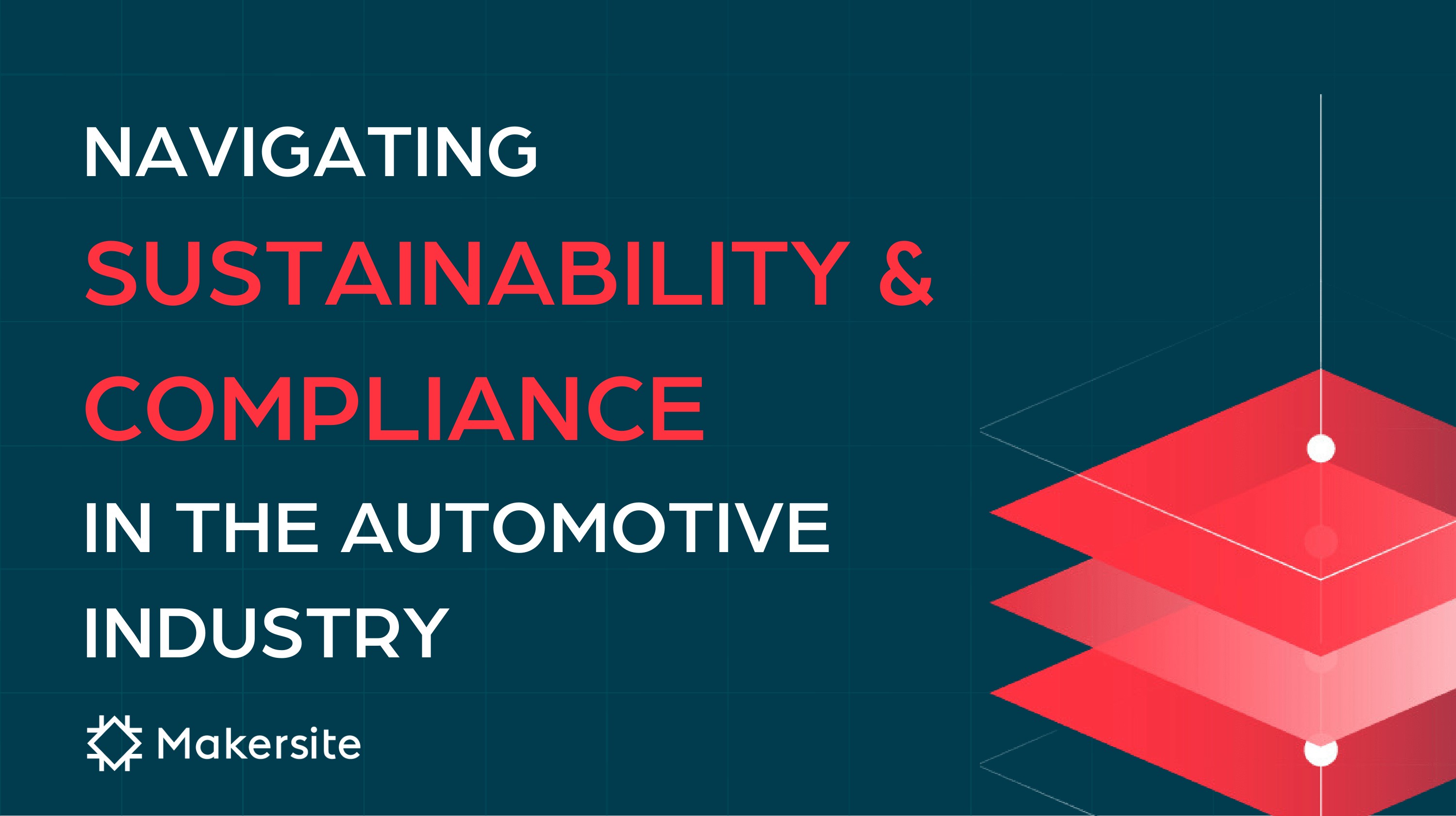You are currently viewing a placeholder content from Wistia. To access the actual content, click the button below. Please note that doing so will share data with third-party providers.
More InformationIn a rapidly evolving business landscape, managing sustainability data has become a critical challenge for industries worldwide. During our recent masterclass, Solving Sustainability Data Challenges, Makersite’s data experts Sophie Kieselbach and Niclas Rabel explored the hurdles organizations face in aligning their sustainability efforts with robust data practices.
From understanding different maturity levels across industries to tackling common data management obstacles, this session provided actionable insights to help businesses enhance their sustainability journeys. Below are 10 key takeaways from the masterclass that can guide companies in improving their sustainability data practices and integrating them into long-term strategies.
10 Key Takeaways
Sustainability Maturity Levels Across Industries
By using data gathered through our Maturity Index submissions the data experts analysed and presented how various industries are at different stages in their sustainability journeys. They were categorized into three maturity levels:
- Novice (76.06%): This group comprised industries like automotive (19.72%) and consumer durable goods (23.94%) that are just beginning to integrate sustainability efforts. They are largely unaware of their entire value chain and tend to have limited visibility into sustainability data beyond Tier 1 suppliers.
- Intermediate (19.72%): These industries have started to address sustainability but are still in transition. Automotive and building materials make up a portion of this group, where data integration is underway, but decision-making is hindered by inconsistent and siloed data.
- Advanced (4.23%): These are the most mature companies in terms of sustainability data, often found in consumer packaged goods. They have harmonized data and an end-to-end view of their supply chain, allowing them to make informed decisions and leverage sustainability as a profit driver.
These maturity levels indicate that most companies are still in the early phases, struggling with integrating sustainability into core business processes.
To find out where you sit on the maturity ladder and how you compare to companies similar to yours fill out our Maturity Index.
Data Challenges
These are some of the most common challenges businesses face when managing sustainability data:
- Internal Awareness Gaps: Many companies are partially aware of their internal data but lack insight into the entire value chain. This creates blind spots beyond Tier 1 suppliers and disrupts accurate decision-making.
- Supply Chain Visibility: Limited data visibility can lead to delayed decisions, supply chain disruptions, and missed regulatory requirements.
- Data Silos: Inconsistent and siloed data across departments (product development, procurement, etc.) makes it harder to drive sustainability initiatives. The inability to share and integrate data from different sources prevents a holistic view of sustainability impacts.
The goal here is to shift from fragmented, inconsistent data management to a fully integrated, transparent data landscape that supports sustainability efforts across the entire supply chain.
Sourcing Challenges
Sourcing data for sustainability presents several key issues:
- Data Accessibility: Difficulty in accessing data due to proprietary restrictions and varying data quality standards from suppliers.
- Missing Descriptions: Purchased parts often lack proper descriptions, leading to inefficiencies in understanding their sustainability impacts.
- Integration Complexity: The complexity of integrating internal databases with third-party providers and IoT devices can lead to fragmented data management systems.
- Inaccuracy and Inconsistency: Manual data entry errors, outdated information, and inconsistent data formats further exacerbate the problem. Companies often find that the same data point varies across different systems, making it difficult to trust the data.
Addressing these sourcing challenges requires robust data integration tools and governance frameworks that standardize the collection and storage of data.
Real-World Scenario
We discussed a real-world scenario where a company we worked with faced the common challenge of inconsistent and missing data, which led to inefficiencies in their product design and cost analysis. The solution involved:
- Data Governance Framework: Implementing a data governance framework to harmonize data from various ERP (Enterprise Resource Planning) and PLM (Product Lifecycle Management) systems.
- Enhanced Data Quality: Improving data quality through integration tools helped the company make better decisions, reduce costs, and design more sustainable products.
The use case emphasizes the importance of unified data governance to overcome fragmented data systems, highlighting the role of tools like Makersite in ensuring smooth integration and accuracy of data.
For a deeper dive into our success stories click here.
Data Management
Systematic data management is a vital ingredient for a successful business, it includes organizing, storing, and maintaining data. Three core benefits are:
- Driving Business Decisions: High-quality data enables businesses to make informed and timely decisions, especially regarding sustainability.
- Enhancing Operational Efficiency: Proper data management reduces errors and inconsistencies, leading to streamlined operations.
- Fostering Innovation: Accurate data supports research, product development, and innovation, particularly in creating sustainable products.
There is often a high cost of poor data quality. For instance, Gartner estimated that poor data quality costs businesses $12.8 million annually, and 95% of organizations acknowledge its negative impact on business performance.
Competitive Advantage
Prioritizing data quality and management gives companies a competitive edge. We looked at how with accurate and comprehensive data, businesses can:
- Stay Ahead: Beat the competition by enabling better decision-making, efficient resource allocation, and long-term planning.
- Consolidate Data: Understanding their data landscape empowers businesses to consolidate information across departments, leading to more integrated and effective sustainability strategies.
- Enable Planning: Accurate data allows for stable long-term planning, which is crucial for efficient resource allocation and maintaining a competitive advantage.
By focusing on data quality, companies not only comply with regulations but also turn sustainability into a key driver of profit and innovation.
Best Practices for Data Management
These are some of the best practices to ensure high-quality data governance:
- Clear Policies: Developing and enforcing data management policies to maintain data integrity across systems.
- Training and Awareness: Conducting training sessions and raising awareness about the importance of data governance within the organization. This helps foster a culture of responsibility for data quality.
- Continuous Improvement: Monitoring data maturity and striving for continuous improvement, such as through regular data audits, validation, and cleansing processes.
- Integration Tools: Using advanced data management and integration tools to standardize and simplify data handling.
These practices ensure that businesses can maintain high-quality, accurate data, which is essential for driving sustainability efforts and making informed decisions.
Before You Begin
It is necessary to initiate engagement with both internal experts and external stakeholders to address data challenges from the very beginning. Key actions would include:
- Data Workshops: Conducting workshops to align on data requirements, sources, and quality expectations early in the project lifecycle.
- Collaborative Approach: Ensuring close collaboration with stakeholders to resolve data issues promptly.
- Proactive Data Quality Maintenance: Identifying and addressing data quality issues before they escalate, and involving the right stakeholders, such as sustainability experts, from the start.
Early engagement and alignment on data management practices ensure a smoother, more efficient sustainability data integration process.
Preparation is Key
To prepare for successful sustainability data management you should first focus on:
- Data Discovery: Starting with a thorough review of the company’s existing data, its sources, and stakeholders involved.
- Pilot Projects: Running a pilot or Proof of Concept (POC) project to test the integration of the source data into the system, which helps prepare for a full rollout.
- Workshops and Feedback: Conducting detailed workshops with IT teams to identify all data points, receive feedback, and suggest improvements. Data enrichment processes ensure the data is ready for system integration.
- ETL Process: The Extract, Transform, Load (ETL) process connects raw data from various sources to the system. After user training and acceptance testing, the project can go live.
By focusing on data quality and system readiness early on, companies can achieve smooth integration and reliable sustainability outcomes.
Actions You Can Take Now
Throughout the Masterclass our data experts emphasized the need for a robust data strategy. These are some of the key action points to kick of a successful data strategy:
- Data Awareness: Understand the organization’s system landscape and ensure data completeness and accuracy.
- Leadership Involvement: Prioritize data governance and quality, with leadership setting the tone for an organization-wide focus on data integrity.
- Regular Audits: Perform regular data audits and implement validation processes to maintain data quality.
- Employee Education: Train employees on the importance of data quality and management, which is crucial for long-term success.
- Advanced Tools: Leverage advanced data management and integration tools to stay ahead of data governance challenges.
Sustainability data challenges can hinder a company’s ability to make informed decisions, drive innovation, and stay competitive. By addressing these challenges with structured data management strategies, clear governance frameworks, and continuous improvement efforts, businesses can unlock new opportunities.
Prioritizing data quality not only supports sustainability goals but also positions companies for long-term success and profitability.
Want more information on how to overcome the sustainability data problem? Read our playbook on that and more now.









